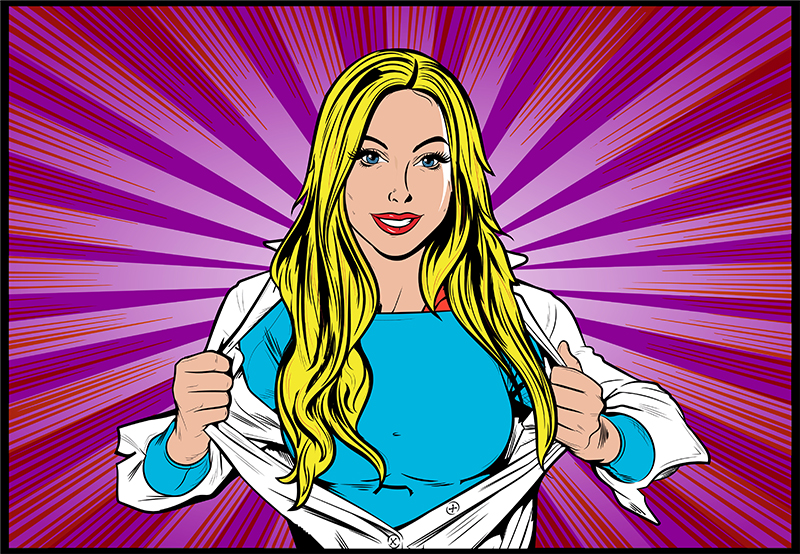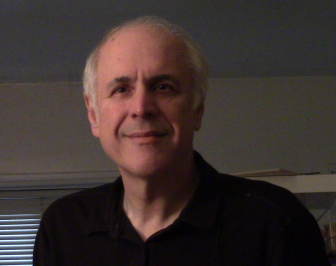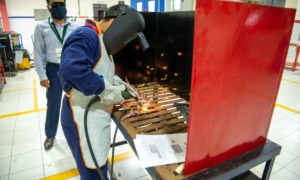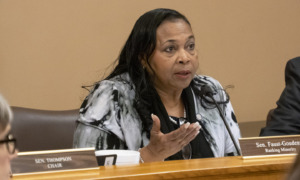
heroestudio/Shutterstock
.
Here’s the first rule of heroism: Real heroes don’t go around proclaiming themselves “heroes.” Here’s the second rule: People who are truly dedicated to helping children don’t expect worshipful treatment just for showing up.
These rules seem to have been lost on some people in child welfare. They’ve been engaging in hero-worship — after casting themselves as the heroes.
But their stories are useful. They help explain why the child welfare system is often, at best, a system that only helps the “helpers” and, at worst, a place to enact white, middle-class rescue fantasies at the expense of poor children of color.
‘UNDERAPPRECIATED’ FOSTER PARENTS
First case in point: Foster and adoptive parents Paul Rummell and Ben West. They founded a group called Oregon Foster Families First. The very name of the group is the first tipoff that there’s a problem: In child welfare, real heroes put the children first.

Richard Wexler
In an interview, West said “they feel like they’re at risk and they’re being mistreated.” But the “they” isn’t children — it’s their fellow foster parents. Said West: “There has to be … a way to be less antithetical to foster parents that are sacrificing their time and being heroes to these kids …”
OFFF’s agenda reflects these priorities. So, for example, there’s an item labeled “child care.” One would hope this might be a call to provide child care to low-income families so their children are not torn from them due to “lack of supervision” charges. Instead it’s a demand that foster parents receive a taxpayer subsidy for day care costs for foster children over and above what foster parents already receive to help with the costs of what is, after all, supposed to be an act of love.
Oh, and OFFF also wants that taxpayer subsidy to be higher. Or as West puts it: “We would love to see appropriate pay for foster families so it doesn’t cost more to have the child in your home than you actually get from the state.”
But why do self-proclaimed heroes seek 100% government reimbursement for their heroism? Foster parents already get more to care for strangers’ children than birth parents get to care for their own — even though study after study shows that the best way to reduce child abuse is to reduce poverty.
And, of course, I have been able to find nothing on the agenda of Oregon Foster Families First to help deal with needless removal of children, even though Oregon tears apart families at a rate more than 40% above the national average.
I’m sure West and Rummell genuinely care about vulnerable children. They are on more solid ground when they complain about the general lack of respect with which foster parents are treated. But it never seems to occur to them to ask one simple question: “They really need us. If this is how the system treats us, how are they treating birth parents?”
‘UNDERAPPRECIATED’ RTC DIRECTOR
Last May in West Virginia, Susan Fry was feeling mighty unappreciated.
“My staff give their hearts,” she told the Huntington Herald-Dispatch. “They sacrifice their family. They miss vacations. They work hours nobody else would want to work for these children. … We are the ones who take the kids nobody else wants. In my career, I have never felt so disparaged, not appreciated.”
To understand why Fry was so upset, you need to understand what she does for a living. She runs a residential treatment center. The most important thing to understand about residential treatment is: It doesn’t work. The research on this is overwhelming.
RTCs sometimes get around this lack of evidence by cherry-picking. On the one hand, they tell us their institutions are absolutely essential because they “take the kids nobody else wants.” But when a child really is unwanted, they don’t want him either — and they refuse to take him. In West Virginia, this practice — along with the fact that the state takes away children at one of the highest rates in America (and no, that’s not because of opioids) — leads to hundreds of children warehoused in out-of-state institutions.
West Virginia’s idea of reform boils down to: At least let’s institutionalize them in-state. So the state human services agency supported legislation to abolish cherry-picking by requiring RTCs to sign “no reject, no eject” contracts.
At a public hearing, someone from the state dared to accuse some RTCs of cherry-picking. Yet in spite of being so horribly victimized, Fry said, “we all showed up for work today and we are taking care of those kids …” But that seems like the minimum one would expect from an agency contracted to take care of kids.
As for cherry-picking: Fry says they’d never ever do such a thing. It’s just that their program is not equipped to take certain youth.
Here’s a problem with that. There is nothing residential treatment does that can’t be done better by providing wraparound services either in a child’s own home or a foster home. In this video, a pioneer of such programs describes how they kept safely in his own home a youth that Fry’s RTC would have rejected as supposedly being too difficult — based on the criteria on her RTC’s own website.
So, if one really is putting the needs of children first, isn’t one obligated to learn how to care for the very, very few children who might actually need to be institutionalized – or shut down?
MEET SOME REAL HEROES
Of course there are real heroes in child welfare:
- First and foremost there are current and former foster youth who have endured trauma I could never claim even to imagine, either at the hands of parents or the system or both. Yet they not only have overcome enormous odds, they now devote their lives to helping others do the same: former foster youth like Nico’Lee Biddle.
- There are parents like Dinah Ortiz-Adames, who got caught in the system herself, fought her way out and now fights for others — all the while refusing to accept the stereotype, so beloved by many journalists, in which the only parent worth talking to is the one who realizes the error of her ways, confesses her sins, begs for redemption and praises child protective services for “saving” her.
- There are foster and adoptive parents who do ask the question: If they’re treating me like this, how are they treating the birth parents? Mary Callahan is one such foster and adoptive parent. She realized that most of the children placed with her could have remained in their own homes had their own parents just gotten the financial help she got. So she set out to transform her state’s entire system. Oh, and she doesn’t feel the government should have to pay her for every dime she spent on her foster children.
- You can be a hero and run an RTC — if you’re one of the few who comes to realize that your program doesn’t work and you change the whole model to emphasize serving children in their own homes or foster homes — even when it takes fighting what one such hero, Jerry Doyle, calls the “group home industry.”
- There are caseworkers who, literally, go the extra mile for children — like the one who, week after week, drives a child four hours — one way — to visit his mother. (And when a caseworker fights to remove a child from a home in which the parents are genuinely so dangerous that there is no other alternative, s/he too is a hero.)
- There are lawyers like Crystal Baker-Burr who devote their professional lives to representing some of the most unfairly stigmatized and stereotyped people in the world — because, as her writing makes clear, she knows the best way to protect children is to preserve families.
- There are child welfare agency leaders such as Joette Katz, who ran the child welfare system in Connecticut from 2011 through 2018. Shortly after she started, there was a high-profile child abuse death. Katz decided that this time, no matter the political cost, there would be no foster care panic — no sudden spike in needless removals of children from their homes. She simply wouldn’t allow it.
There are many more such heroes in child welfare. Yet none of them has ever felt the need to proclaim it, or complained about lack of recognition.
A FLAWED SELF-ASSESSMENT
But for the most startling example of a flawed self-assessment we need to return to Oregon.
Meet Marilyn Jones, until recently director of child welfare for the Oregon Department of Human Services.
It seems that Jones never met an institution she didn’t love. She spent much of her time calling for Oregon to build more of them — and to warehouse within them children as young as age 5.
- When Disability Rights Washington exposed an Iowa institution to which Washington state was shipping children as allegedly rife with abuse, Washington state promised to remove the children. But Marilyn Jones kept Oregon foster children there.
- Days after Jones’ workers raved about another out-of-state institution, this one in Utah, Utah authorities found so much abuse there that the place was forced to close.
- Jones also oversaw the institutionalization of Oregon foster children in juvenile jails. But they had a fresh coat of paint on the cinderblock and pretty pictures on the walls — making them “repurposed juvenile jails.”
When Gov. Kate Brown finally forced Jones to resign, this is what Jones said in a farewell email to employees:
Richard Wexler is executive director of the National Coalition for Child Protection Reform.































